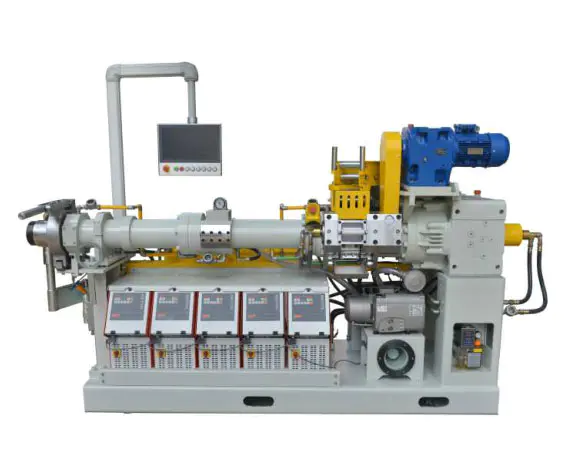What Are the Types of Rubber Extrusion Production Lines?
Rubber extrusion has become an essential process in the manufacturing of various rubber products, ranging from automotive parts to household goods. Central to this process is the rubber extrusion production line, a system designed to shape raw rubber material into continuous profiles with consistent dimensions. The configuration and technology of these production lines vary based on the type of rubber being processed and the intended final product.

Single Screw Rubber Extrusion Production Line
One of the common types is the single screw rubber extrusion production line. This system uses a single rotating screw to push raw rubber material through a die, forming a continuous shape. The screw also provides mixing and homogenization of the material, which helps ensure uniform quality in the final product. Single screw production lines are generally suitable for processing standard rubber compounds and are valued for their straightforward design and ease of maintenance. They are widely used in applications such as tubing, hoses, and simple profiles. The simplicity of the single screw rubber extrusion production line makes it an efficient choice for manufacturers looking to balance cost and performance.
Twin Screw Rubber Extrusion Production Line
For more complex rubber compounds, the twin screw rubber extrusion production line is often preferred. This system features two intermeshing screws that provide improved mixing and higher pressure, which is particularly useful for materials that are difficult to process. The twin screw configuration enhances the dispersion of additives and ensures a consistent material flow, reducing defects in the extruded product. These production lines are commonly applied in industries requiring precise control over material properties, such as automotive seals, gaskets, and specialized industrial components. The twin screw rubber extrusion production line offers greater flexibility compared to single screw systems, allowing manufacturers to work with a wider range of rubber formulations.
Continuous Rubber Extrusion Production Line
The continuous rubber extrusion production line is designed for large-scale manufacturing where high output and consistency are priorities. In this type of line, raw rubber is fed continuously into the extruder, processed, and shaped into long, uniform profiles without interruption. This setup minimizes downtime and waste, making it ideal for producing long runs of standardized products. Continuous lines often include additional components such as cooling systems, cutting devices, and winding units, which further enhance efficiency. Manufacturers benefit from the continuous rubber extrusion production line because it supports steady production rates while maintaining consistent quality across extensive production batches.
Multi-Layer Rubber Extrusion Production Line
Some applications require the combination of multiple rubber layers to achieve specific properties, such as enhanced strength or improved chemical resistance. The multi-layer rubber extrusion production line addresses this need by allowing the simultaneous extrusion of two or more rubber compounds into a single profile. This type of production line is commonly used in automotive hoses, conveyor belts, and high-performance seals. By integrating multiple extruders into one coordinated system, the multi-layer rubber extrusion production line ensures precise layering and bonding between different materials, providing a product with performance characteristics.
Specialized Rubber Extrusion Production Line
In addition to standard configurations, specialized rubber extrusion production lines are designed to meet unique industry requirements. These lines may include modifications such as enhanced heating and cooling zones, advanced screw designs, or custom dies to produce complex profiles or specialty products. For example, lines designed for silicone rubber or thermoplastic elastomers require careful temperature control and specific screw geometries to maintain material integrity. Specialized rubber extrusion production lines are particularly important in industries such as medical equipment, electronics, and aerospace, where product specifications are stringent and material performance is critical.






 English
English 中文简体
中文简体 русский
русский



